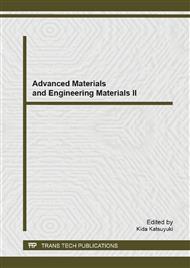p.439
p.444
p.453
p.457
p.464
p.468
p.474
p.479
p.484
The Research of the Application of Smart Coatings on Architectural Ornaments
Abstract:
The understanding of the coating material is the premise and guarantee of conducting architectural ornaments. However, the traditional ornaments have the disadvantages of high pollution, monotonouscolor, weak functionality and poor formative nature. The paper is aimed at researching about smart coatings and its application on architecture ornaments and trying to solve these problems. As an important material, it has great significance for improving people’s living environment and protecting environment.
Info:
Periodical:
Pages:
464-467
Citation:
Online since:
April 2013
Authors:
Price:
Сopyright:
© 2013 Trans Tech Publications Ltd. All Rights Reserved
Share:
Citation:


